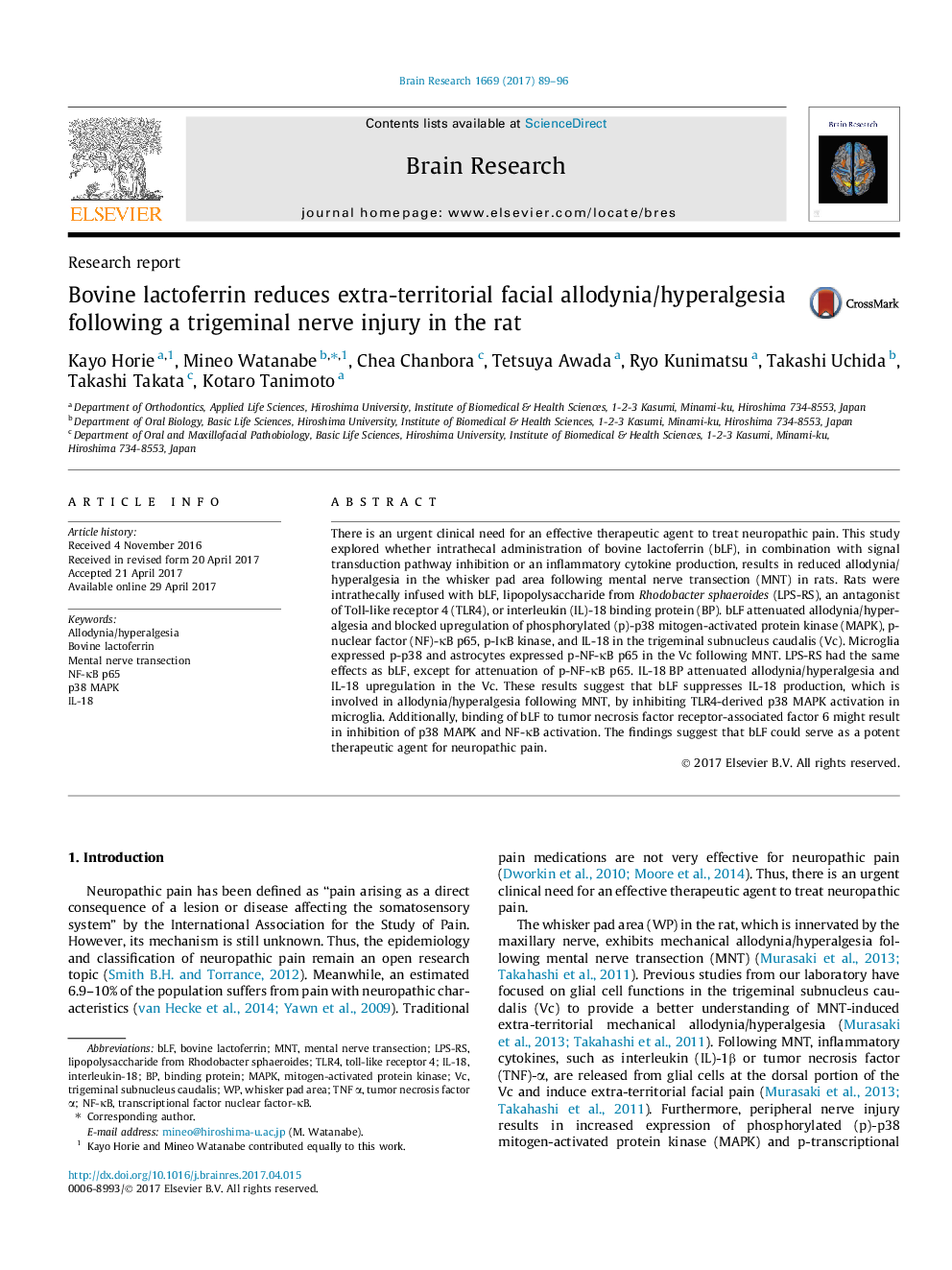| Article ID | Journal | Published Year | Pages | File Type |
|---|---|---|---|---|
| 5736745 | Brain Research | 2017 | 8 Pages |
There is an urgent clinical need for an effective therapeutic agent to treat neuropathic pain. This study explored whether intrathecal administration of bovine lactoferrin (bLF), in combination with signal transduction pathway inhibition or an inflammatory cytokine production, results in reduced allodynia/hyperalgesia in the whisker pad area following mental nerve transection (MNT) in rats. Rats were intrathecally infused with bLF, lipopolysaccharide from Rhodobacter sphaeroides (LPS-RS), an antagonist of Toll-like receptor 4 (TLR4), or interleukin (IL)-18 binding protein (BP). bLF attenuated allodynia/hyperalgesia and blocked upregulation of phosphorylated (p)-p38 mitogen-activated protein kinase (MAPK), p-nuclear factor (NF)-κB p65, p-IκB kinase, and IL-18 in the trigeminal subnucleus caudalis (Vc). Microglia expressed p-p38 and astrocytes expressed p-NF-κB p65 in the Vc following MNT. LPS-RS had the same effects as bLF, except for attenuation of p-NF-κB p65. IL-18 BP attenuated allodynia/hyperalgesia and IL-18 upregulation in the Vc. These results suggest that bLF suppresses IL-18 production, which is involved in allodynia/hyperalgesia following MNT, by inhibiting TLR4-derived p38 MAPK activation in microglia. Additionally, binding of bLF to tumor necrosis factor receptor-associated factor 6 might result in inhibition of p38 MAPK and NF-κB activation. The findings suggest that bLF could serve as a potent therapeutic agent for neuropathic pain.
